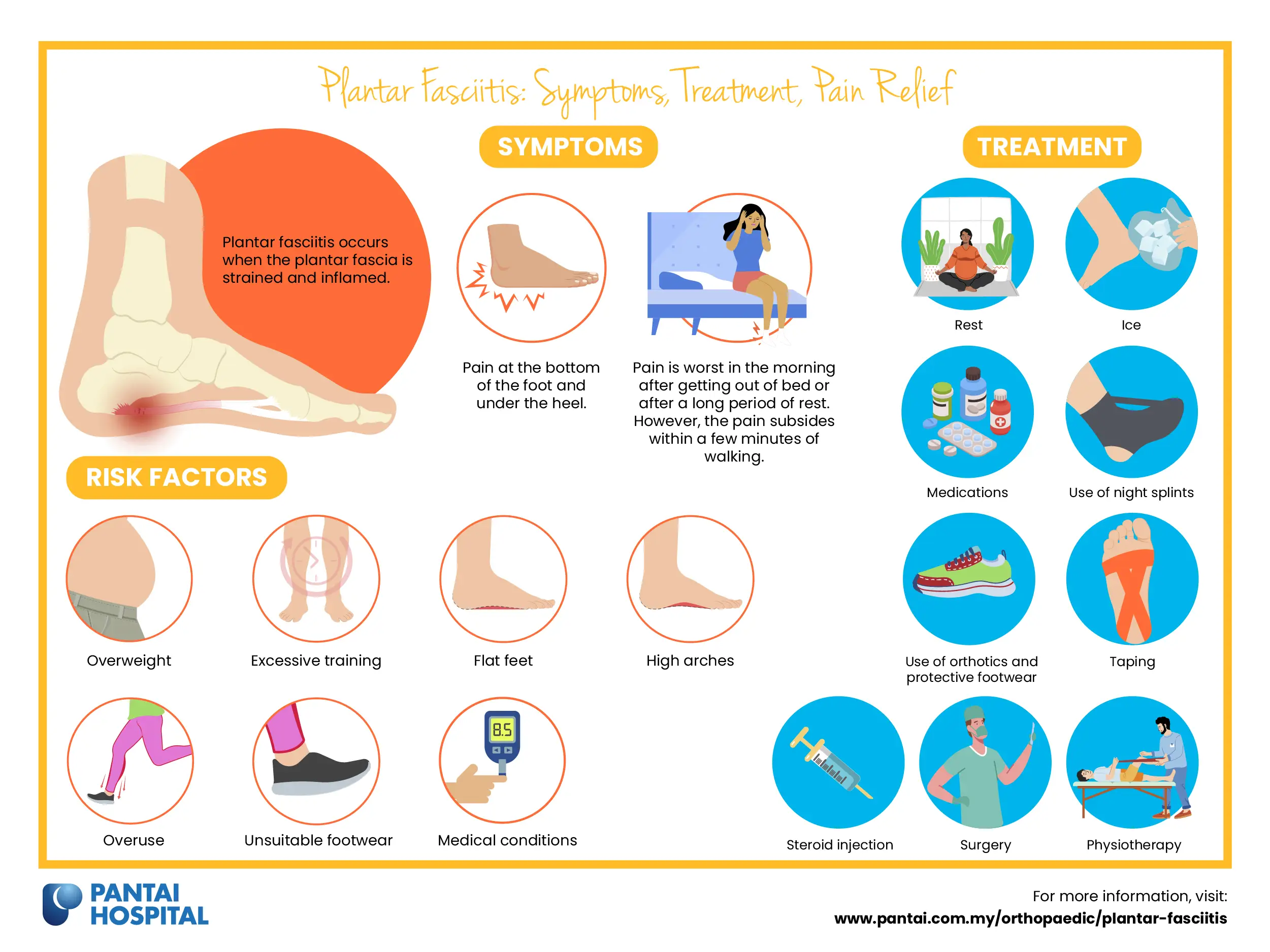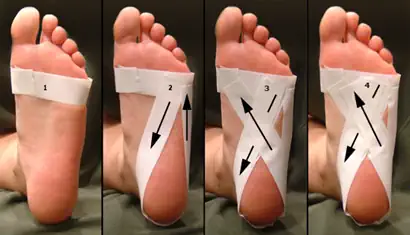
Is there intense pain at the bottom of your foot? If this ache begins after an intense day of hiking or dancing, it should usually subside in a few days. However, if the pain persists, it could indicate a condition called plantar fasciitis
Plantar fasciitis occurs when the plantar fascia is strained and inflamed. The plantar fascia is a thick piece of tissue at the bottom of the feet that connects the toes to the heel bone and supports the arch of your foot.
Heel pain due to plantar fasciitis is relatively common. It usually affects people who stand, jump or run for an extended period. Most people with plantar fasciitis recover within a year, even if they are not given specific treatment.
Following are some of the symptoms of plantar fasciitis:

Causes or risk factors of developing Plantar Fasciitis include:
Your doctor would first question your general health and symptoms before conducting a thorough physical examination to diagnose plantar fasciitis. Diagnosis is made based on your reported symptoms, physical examination and investigations.
If you exhibit typical plantar fasciitis symptoms, you may not need X-rays, an ultrasound, or other tests. However, depending on the nature and degree of pain as well as other factors, your doctor may recommend X-rays or magnetic resonance imaging (MRI) scans to determine if other conditions are causing the heel pain.
Many individuals with plantar fasciitis do not require specific treatment since the condition improves on its own, although some individuals may require treatment for pain management.
The following are commonly used options for treating plantar fasciitis:

In addition to the treatment options above, exercises are strongly recommended for pain management in plantar fasciitis. Following are some easy exercises for plantar fasciitis to begin with.
Lean against a chair that you position in front of yourself. Extend one leg behind you until you feel a stretch. Bend out the other leg slightly in the front. Hold for a few seconds and return to the starting position.
Use a wall as support for this exercise and place your foot flat on the floor. Keep one leg straight, and lean forward, reducing the angle between your foot and shin until a stretch is felt at the calf muscle in the leg you have placed behind.
Hold this position for 1 minute and remember not to let your heel off the floor.
Sit comfortably on a chair and place your bare foot on a tennis ball. Roll the tennis ball forwards and backward for 1 minute.
If you do not have a tennis ball, the next best thing to do is take a filled-up bottle and freeze it. Once frozen, wrap it with a towel to prevent ice burn. Then, repeat the same steps as for the tennis ball.
Sit with the affected leg crossed over the unaffected leg. Hold the toes of the affected leg and bend them backwards until you feel a stretch in the sole of your foot. Make sure to hold the stretch for 1 minute.
In this simple exercise, place the front of your foot ad toe against a wall. Then, lean forward and hold for 1 minute.
Various activities can aggravate plantar fasciitis pain, so it is recommended to take preventive measures. Avoid doing the following:
Early detection of Plantar Fasciitis makes it easier to treat the condition with effective and appropriate treatment. A dedicated and expert team of Orthopaedic specialists at Pantai Hospital is available for consultation to provide the best care and assistance.
Get in touch with us to book an appointment today if you have concerns or questions regarding Plantar Fasciitis. We assure you the best possible care tailored to your specific needs.
Pantai Hospital has been accredited by the Malaysian Society for Quality in Health (MSQH) for its commitment to patient safety and service quality.

